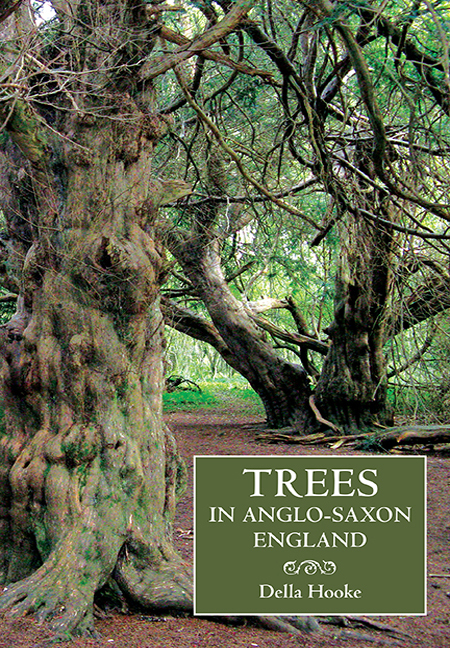Book contents
- Frontmatter
- Contents
- List of Illustrations and Tables
- Preface and Acknowledgements
- List of Abbreviations
- PART I Tree Symbolism
- PART II Trees and Woodland in the Anglo-Saxon Landscape
- PART III Individual Tree Species in Anglo-Saxon England
- Chapter 8 Trees of Wood-Pasture and ‘Ancient Countryside’
- Chapter 9 Trees of Wet Places in Early Medieval Records: Alder and Willow
- Chapter 10 Trees of Open or Planned Countryside
- Chapter 11 Other Trees Noted in Charters and Early Place-Names
- Chapter 12 Trees not Readily Apparent in the Early Medieval Written Record
- Epilogue
- Bibliography
- Index
- Anglo-Saxon Studies
Chapter 11 - Other Trees Noted in Charters and Early Place-Names
from PART III - Individual Tree Species in Anglo-Saxon England
Published online by Cambridge University Press: 09 May 2017
- Frontmatter
- Contents
- List of Illustrations and Tables
- Preface and Acknowledgements
- List of Abbreviations
- PART I Tree Symbolism
- PART II Trees and Woodland in the Anglo-Saxon Landscape
- PART III Individual Tree Species in Anglo-Saxon England
- Chapter 8 Trees of Wood-Pasture and ‘Ancient Countryside’
- Chapter 9 Trees of Wet Places in Early Medieval Records: Alder and Willow
- Chapter 10 Trees of Open or Planned Countryside
- Chapter 11 Other Trees Noted in Charters and Early Place-Names
- Chapter 12 Trees not Readily Apparent in the Early Medieval Written Record
- Epilogue
- Bibliography
- Index
- Anglo-Saxon Studies
Summary
Fruit trees frequently appear as boundary landmarks in pre-Conquest charters, although it is not always the improved varieties that may be being referred to. Apples and pears are frequently referred to in charter boundary clauses as well as in early place-names but references to the cherry are much rarer and this can, of course, be to the wild variety. Even rarer is a reference which may be to the Mespilus germanica, the medlar, in the name of Kirby Misperton: Mispeton 1086, Yorkshire North Riding. It may be significant that at least part of this estate was Church land, as the name implies, held by the abbot of York from Robert de Tosny in Domesday Book, and the Church was instrumental in maintaining orchards.
There is little doubt that orchards were being deliberately planted and maintained throughout the early medieval period. Many of our common orchard fruit trees are thought to have been introduced by the Romans and orchards were planted by both them and the Anglo-Saxons. Many monasteries were reorganised shortly before the Norman Conquest to a revised Benedictine rule and the monks of that order had long been instructed to maintain water mills, orchards and kilns within the monastic precincts, although the term ‘orchard’ at first could be used to apply to a garden which was not confined to fruit trees. Plantings are said to have been carried out at Ely under the guidance of the first abbot, Byrhtnoth, of the new Benedictine monastery established in 970: hortos quoque et pomeria circa ecclesiam late plantavit nascentium ‘he also planted gardens and orchards of newly propagated stock over a wide area around the church’ and similar claims are made for the monastery at Thorney in Cambridgeshire. The duties of an estate reeve described in the tenth or eleventh century also specify that winter tasks included timber cleofan. orcerd ræran ‘cleave timber, establish an orchard’. Domesday Book confirms the presence of orchards in many places by that date, especially on monastic estates: a virgultum ‘orchard’ noted at Exeter, Devon, and another at Orchard in Church Knowle, Dorset, are examples in south-western England while at Nottingham an orchard (pomerium) was about to be planted.
- Type
- Chapter
- Information
- Trees in Anglo-Saxon EnglandLiterature, Lore and Landscape, pp. 245 - 274Publisher: Boydell & BrewerPrint publication year: 2011

